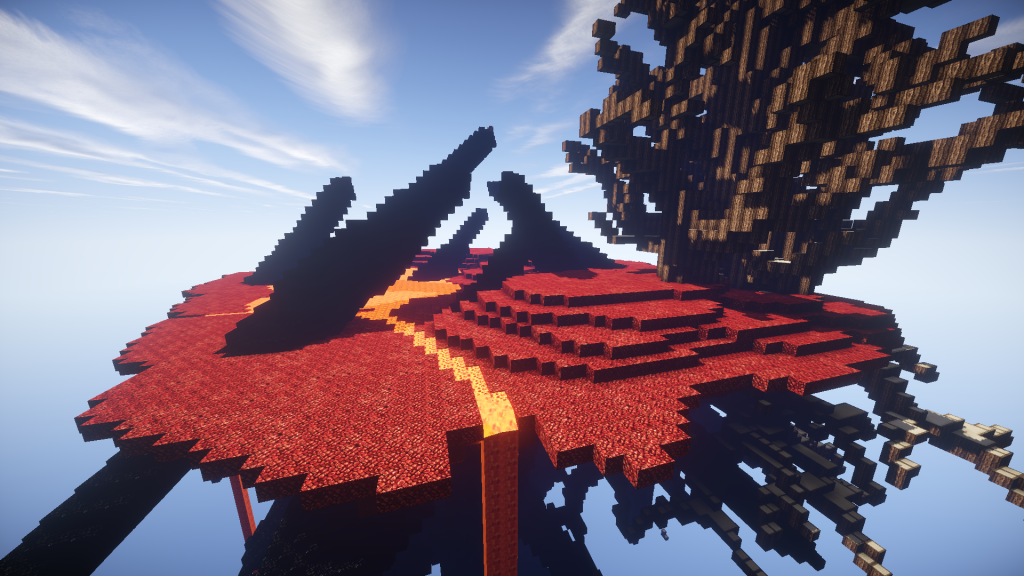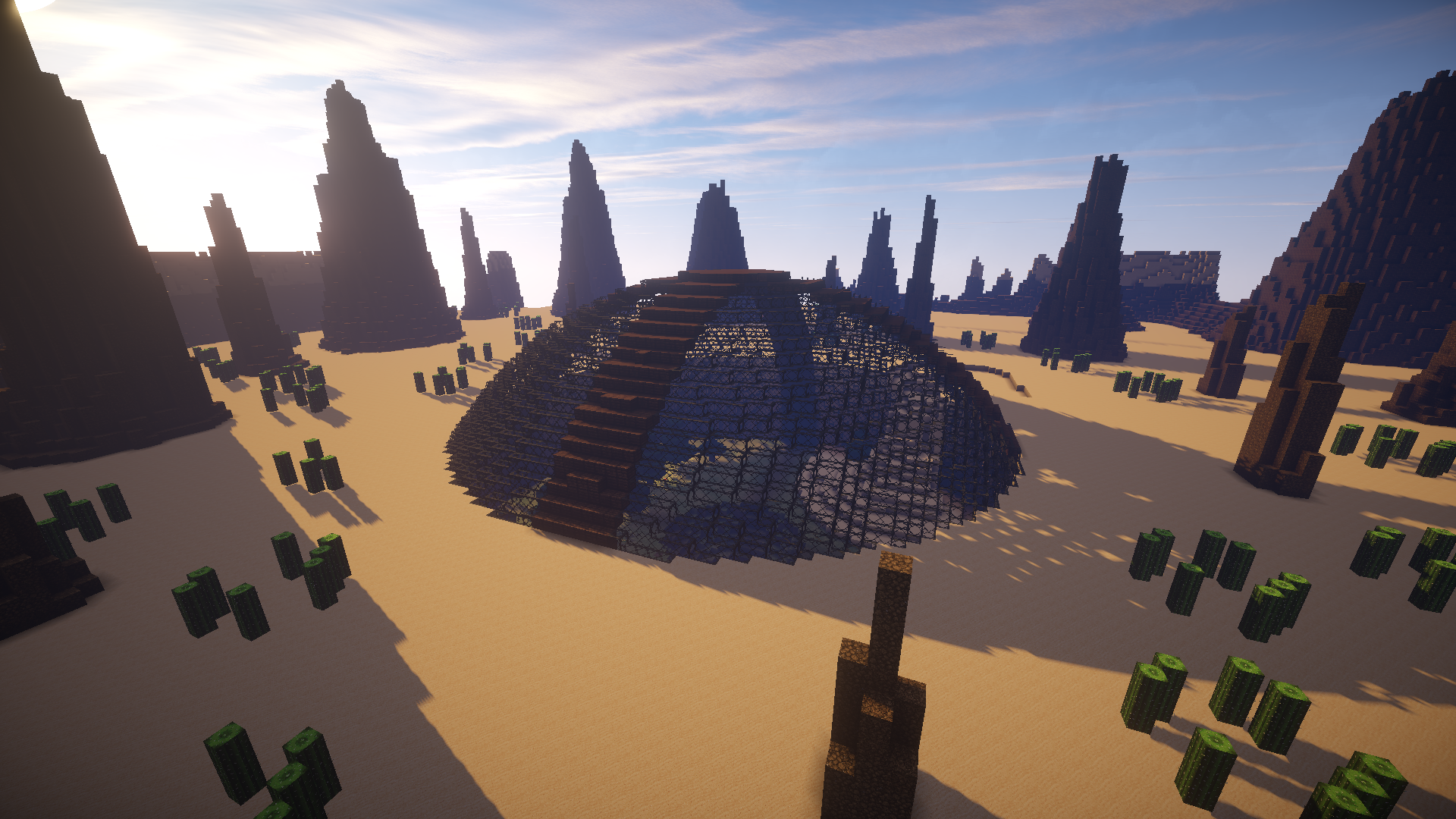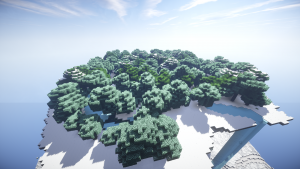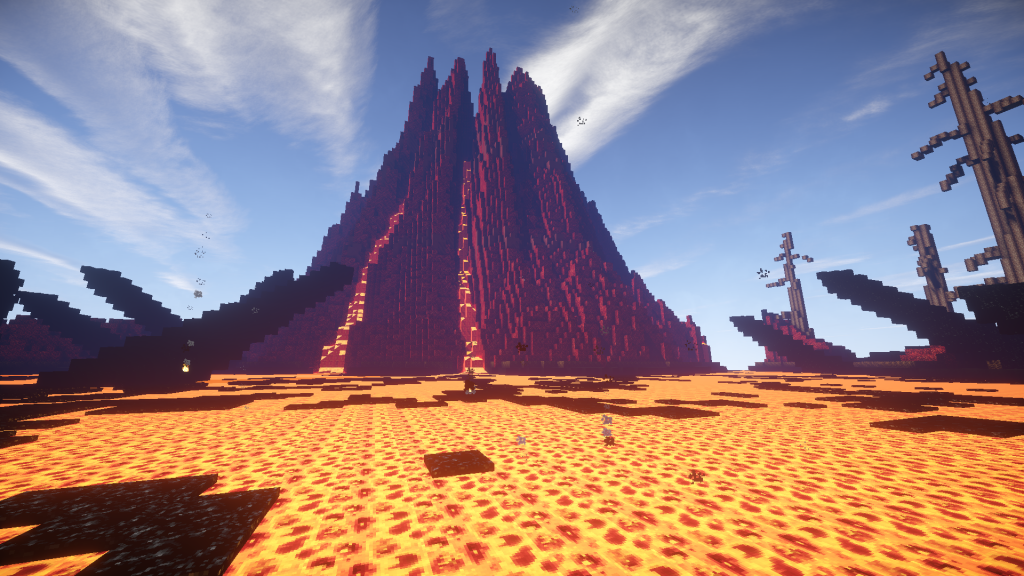Agit Histrionem – Level Design’s Effect on Play
The colors in this mysterious force field are so bright, they’re almost blinding. And they seem to be in layers. But the strangest thing is that nothing shows up on the radar screen. What could that mean? Is it possible to travel through this mysterious force field or will you crash and be destroyed? And what about the layers? If you make it through one, can you make it through the next, and the next? It’s decision time and there are only a few seconds to think about it. Turn back or blast ahead and try to make it through the layers of this brightly colored force field. It’s up to you.
—Atari Super Breakout Game Program Instructions
Context changes perspective. How we see ourselves and how we see others in relation to each other, and to the environment, can shift with just a change of palette, or, as can be seen with Super Breakout, a few lines of text. More importantly, and in context to Minecraft Hunger Games, they change how players play and how they do not play.
I’ve spent the last week exploring different Minecraft Hunger Game servers, as well as enticing my friends with beer and brownies and forcing them to try out my poorly adapted Hunger Game worlds, to see exactly what environmental factors matter, what they change, and how they impact players’ interactions with each other.
Size:
Size appeared to be the largest deciding factor in pace and length of a Hunger Game. A tiny size, such as a little floating island, ensures that the competitors are able to see each other at almost any given moment, and the focus of the game becomes less about finding the other players and more about being the first person to make it to the weapon chests, and the last person to get booted off the island and fall to their untimely death. It appears to be the favoured size by large servers due to the rapidity at which it can process players. Unfortunately, the “replayability” of small maps is greatly reduced due to ease of memorization. Large maps, on the other hand, are much rarer, and games can take many days to complete. Some even integrate mazes or many rooms with teleporters, that initially seem to be small maps but due to their interwoven mutli-layered nature are actually large maps. A few servers I encountered countered this increased time requirement by having custom compasses that point out the nearest player, but nonetheless the length of the game still becomes longer in proportion. Focus shifts onto finding other players, and more often than not, about having enough food to be able to survive for the time it requires to find other players. Cooperation and alliances is far more likely to occur on large maps, perhaps due to teamwork being far more rewarding on a long timescale.
Complexity:
To keep it brief, the number of complex mechanisms that have singular purpose essentially reduce the number of instances of emergent play but increase the overall factor of amusement if only for a single instance of curiosity. Yet, a singular powerful item of destruction, such as a TNT catapult, causes “King of the Hill” gameplay that sometimes subverts this in players’ attempts to eliminate the shift in power.
Deadliness:

You can either climb the “tree” precariously near the edge of the island to get to one of the chests, being punched off and killed in the process, or try to get the chest in the middle of lava creek and die that way.
Unsurprising, how deadly a map is changes how the players approach it. When lava is involved, people are far less likely to wander aimlessly for fear that someone might prod them into said lava or off a cliff or whatnot at any given moment. Yet while it increases the sense of urgency and action, players feel “cheated” when they win not due to them stabbing or maiming the last other player, but instead due to being the last “survivor”. It begs the question as to whether having an anti-climactic finish where the last opponent simply steps into lava and burns to death is in sync with the ideals of what Minecrafters believe to be a HG experience enough to be included. Hunger and traps are also variations of this thematic. On one server, the designer had even chosen to enable mob spawning at night, ensuring that about 30% of the players died in the first few nights. It helps ensure that it isn’t simply the first person to the chest that wins if getting to the chest is likely to kill you. In practice, deadliness can have a very sought after balancing effect, where an elite player can still be killed if they are overconfident in their abilities to navigate a mine field, or where a new player can survive simply by being less reckless than their opponents. Nonetheless, despite the balancing effect, many feel cheated, and many deadly maps, especially with mobs and/or hunger gameplay, are tagged as “Hardcore Survival with PvP” instead of being a “true” Hunger Game.
Other variations abound, but these three environmental factors appear to be the crux of what essentially changes how a HG player tackles one map versus another. As I continue to consider such variations, I hope to see how the chosen thematic; a snowy knoll, a hellish landscape, a castle, or a sunny veldt, might influence how players play. Either way, I find how much impact this often neglected aspect has on everything from player mood to gameplay during a HG match absolutely fascinating.
To consider:
- What combination of these factors do we want for our players? How do we feel about a small, dangerous, and simple map versus a large, safe, and complex map? How will it change how our players interact with the world, and with each other?
- What combination improves chances of cooperative play versus competitive attitude? Which do we prefer to see and why? Do we wish to balance it so that both of very likely?
- Is having a large, safe, and simple map “HG” enough even with a few HG elements added, or does it need something else?




Kudos for the extensive research and testing you’ve done on this. It’s curious, isn’t it, that people would consider deadly maps with mobs and hunger to be “Hardcore Survival with PvP” rather than “true Hunger Games” when monsters and a deadly environment are very much a part of the Hunger Games narrative — supposedly, dehydration, exposure, and encounters with wildlife account for more tribute deaths than actual tribute-vs-tribute violence.